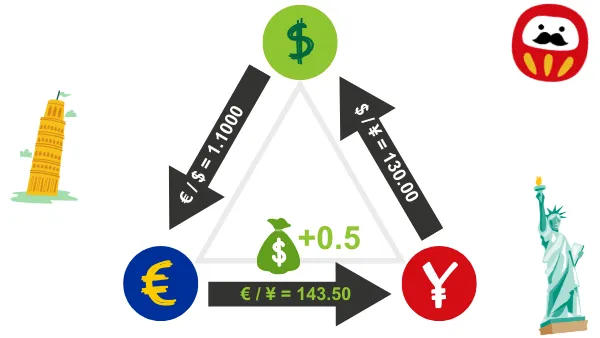What are the sources of quotes for forex brokers?
The forex market is one of the largest and most liquid markets in the world, but it is a decentralized market, meaning there is no single centralized exchange to unify prices. Therefore, the sources of quotes for forex brokers may vary. Brokers' quotes typically come from multiple liquidity providers, which include large banks, hedge funds, and other financial institutions. Brokers obtain the buy and sell prices in the market by collaborating with these liquidity providers and offer these prices to their clients. This article will delve into the sources of forex brokers' prices, the process of quote formation, and the factors that influence quotes.1. The role of liquidity providers
Liquidity providers are institutions that offer buy and sell prices to brokers in the forex market. These institutions are usually large financial institutions, banks, hedge funds, and other professional trading firms. Liquidity providers supply a significant amount of capital and trading opportunities to the market, ensuring that brokers can obtain stable buy and sell prices.- Banks: Global large banks are the main liquidity providers in the forex market. These banks provide exchange rate quotes to forex brokers and trade based on market demand.
- Hedge Funds: Some hedge funds also act as liquidity providers, especially during periods of high market volatility, these institutions may provide additional market liquidity.
- Other Financial Institutions: There are also some professional market makers and financial institutions that specialize in providing forex quotes, and their presence makes the market more diversified and stable.
Brokers typically connect to multiple liquidity providers to ensure they can obtain the most competitive buy and sell prices to offer to clients.
2. The process of quote formation
Forex brokers do not directly participate in trading in the forex market; they act as intermediaries between clients and the market. They form the final prices offered to clients by obtaining quotes from liquidity providers. Here are several key steps in the quote formation process:A. Collecting quotes from multiple liquidity providers
Brokers collaborate with multiple liquidity providers to obtain buy and sell prices from each provider. These quotes reflect the current supply and demand situation in the market. The broker's system automatically aggregates these quotes and ensures the selection of the most competitive prices to offer to clients.- Buy Price: The price at which liquidity providers are willing to buy a certain currency pair, which is the "buy price" in the broker's final quote.
- Sell Price: The price at which liquidity providers are willing to sell a certain currency pair, which is the "sell price" in the broker's final quote.
B. Aggregating quotes
Since brokers typically connect to multiple liquidity providers, this means they can aggregate quotes from different providers and choose the most competitive prices. This process is called "Liquidity Aggregation." Aggregating quotes helps brokers ensure that clients can obtain the best buy and sell prices and can enhance market liquidity.- Best Buy/Sell Price Selection: Brokers automatically select the best quotes from different liquidity providers and present these quotes to clients. This way, clients can trade at the most favorable prices in the market.
- Real-time Quotes: The broker's quote system is usually updated in real-time, meaning the quotes clients see should be the closest real-time prices in the current market.
C. Increasing Spread
Brokers will increase the spread between the buy and sell prices provided by liquidity providers. The spread is one of the main sources of income for brokers, meaning brokers earn profits by widening the gap between the buy and sell prices.- Spread Income: Brokers slightly adjust the quotes from liquidity providers, widening the gap between the buy and sell prices, which constitutes the broker's spread income. The spread can be fixed or variable, depending on market conditions and the broker's operating model.
- Variable Spread: During periods of high market volatility, brokers may adjust the spread based on liquidity providers' quotes, meaning the spread clients see will fluctuate with market volatility.
3. Factors affecting brokers' quotes
The forex market is a dynamic market, and quotes are influenced by various factors. Here are several main factors that affect brokers' quotes:A. Market Liquidity
Market liquidity is one of the most important factors affecting quotes. When market liquidity is sufficient, the gap between the buy and sell prices (i.e., spread) will be relatively small, and quotes will be more stable. However, during periods of high market volatility or insufficient liquidity, brokers may face larger slippage or wider spreads.- High Liquidity: During major trading sessions (such as when London and New York open), liquidity is usually high, quotes are stable, and spreads are narrow.
- Low Liquidity: During the opening of the Asian market or before and after significant economic events, market liquidity may be insufficient, quotes may become unstable, and spreads may widen.
B. Market Volatility
Market volatility refers to the magnitude of price changes over a short period. When market volatility is high, brokers' quote systems need to update quotes more frequently. This means brokers may widen the spread during periods of market volatility to respond to rapid market changes.- Impact of Major Events: For example, when significant economic data is released, central bank policy meetings occur, or geopolitical events happen, market volatility usually increases, and brokers' quotes may become unstable.
- Widening Spread: During high volatility periods, brokers often widen the spread to cope with market price uncertainty and ensure they can obtain corresponding liquidity in external markets.
C. Brokers' Order Execution Models
The "order execution model" of brokers also affects quotes. Different brokers adopt different models to execute client orders, including A-Book, B-Book, or hybrid models. Each model has different ways of forming quotes and executing orders.- A-Book Model: In this model, brokers pass client orders directly to the external market, and quotes come entirely from liquidity providers. The prices clients see are usually very close to market prices.
- B-Book Model: In the B-Book model, brokers internalize client orders, meaning quotes may be adjusted based on the broker's internal risk management, and thus may differ from market prices.
D. Technical Infrastructure
The technical infrastructure of brokers also affects the quality of quotes. Advanced technical infrastructure can help brokers update quotes in real-time and ensure fast order execution, while poor infrastructure may lead to delays in quotes or slippage.- Low Latency Technology: Brokers using low latency technology can ensure that the quotes clients see are real-time, reducing price discrepancies during order execution.
- Order Routing System: Brokers' intelligent order routing systems can help brokers select the best quotes from multiple liquidity providers, ensuring clients receive the most competitive prices.
4. How do traders assess the quality of brokers' quotes?
Traders should understand the sources of brokers' quotes and the factors that influence quotes to assess the quality of quotes. Here are several evaluation criteria traders can consider:A. Transparency of Quotes
Traders should choose brokers that provide transparent quotes, and these brokers should clearly explain their sources of quotes and the process of quote formation to clients. If brokers can provide detailed sources of quotes (e.g., from which liquidity providers), clients can trust the accuracy and fairness of their quotes more.B. Stability of Quotes
The stability of quotes is one of the important considerations for traders when choosing brokers. Brokers should be able to provide stable quotes during market volatility and minimize slippage as much as possible. Traders can assess the stability of brokers' quotes by observing the changes in spreads over different time periods.C. Speed of Quote Updates
The speed of quote updates determines whether traders can trade at near real-time prices. Brokers using advanced technology can usually provide instant updates of quotes, which is especially important for high-frequency traders or short-term traders.Conclusion
The sources of quotes for forex brokers typically come from multiple liquidity providers, such as large banks, hedge funds, and other professional trading institutions. Brokers aggregate quotes from these providers and add a spread to earn profits. The process of quote formation is influenced by market liquidity, volatility, and the brokers' order execution models. Traders should choose brokers with transparent, stable quotes and fast update speeds to ensure they receive the most competitive prices and the best trading experience.Hi, We are the Mr.Forex Research Team
Trading requires not just the right mindset, but also useful tools and insights.Here, we focus on Global Broker Reviews, Trading System Setup (MT4 / MT5, EA, VPS), and Forex Trading Basics.
We personally teach you to master the "Operating Manual" of financial markets, building a professional trading environment from scratch.
If you want to move from theory to practice:
- Help share this article to let more traders see the truth.
- Read more articles on Broker Tests and Forex Education.





